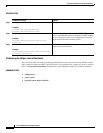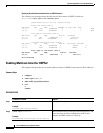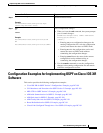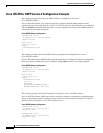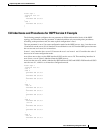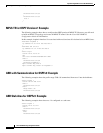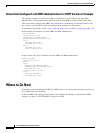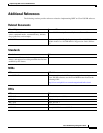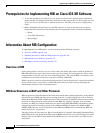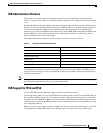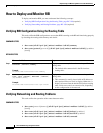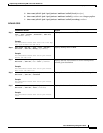
Implementing OSPF on Cisco IOS XR Software
Where to Go Next
RC-192
Cisco IOS XR Routing Configuration Guide
Virtual Link Configured with MD5 Authentication for OSPF Version 2: Example
The following examples show how to configure a virtual link to your backbone and apply MD5
authentication. You must perform the steps described on both ABRs at each end of the virtual link.
After you explicitly configure the ABRs, the configuration is inherited by all interfaces bound to that
area—unless you override the values and configure them explicitly for the interface.
To understand virtual links, see the “Virtual Link and Transit Area for OSPF” section on page RC-138.
In this example, all interfaces on router ABR1 use MD5 authentication:
router ospf ABR1
router-id 10.10.10.10
authentication message-digest
message-digest-key 100 md5 0 cisco
area 0
interface pos 0/2/0/1
interface pos 0/3/0/0
area 1
interface pos 0/3/0/1
virtual-link 10.10.5.5
!
!
In this example, only area 1 interfaces on router ABR3 use MD5 authentication:
router ospf ABR2
router-id 10.10.5.5
area 0
area 1
authentication message-digest
message-digest-key 100 md5 0 cisco
interface pos 0/9/0/1
virtual-link 10.10.10.10
area 3
interface Loopback 0
interface pos 0/9/0/0
!
!
Where to Go Next
To configure route maps through the RPL for OSPF Version 2, see the Implementing Routing Policy on
Cisco IOS XR Software document.
To build an MPLS TE topology, create tunnels, and configure forwarding over the tunnel for OSPF
Version 2; see the Cisco IOS XR MPLS Configuration Guide.



